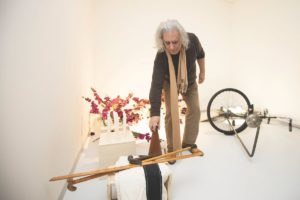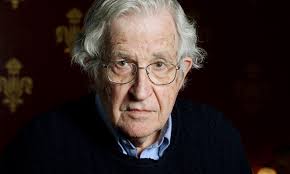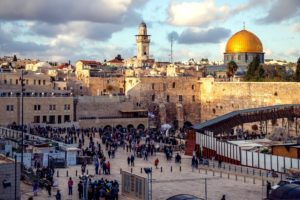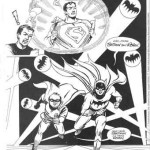James Baldwin Debates William F. Buckley (1965)
The legendary debate that laid down US political lines on race, justice and history
In 1965 at the University of Cambridge, two of the foremost American intellectuals were challenged with the question: ‘Has the American Dream been achieved at the expense of the American Negro?’ From William F Buckley’s highly stylised posturing and pointing, to James Baldwin’s melodious rhetorical flourishes and memorable scowls, what’s become known as the ‘Baldwin-Buckley Debate’ now stands as one of the archetypal articulations of the dividing line between US progressives and conservatives on questions of race, justice and history. Baldwin, the famed African-American writer, whose reputation as a progressive social critic and visionary Civil Rights activist has only risen in the intervening decades, argues that the very foundation of US society is built on the dehumanisation of its African-American population. Meanwhile, Buckley, the leading US conservative intellectual of the period, argues that African Americans would be best served by exploiting their country’s many freedoms and opportunities, rather than pointing a collective finger at discriminatory structures and institutions. In both cases, their positions presage contemporary divisive debates in the US, though one wonders whether such an event could happen in today’s political environment.
While usually reduced to short clips, the full hour-long debate – presented here in its entirety – is a remarkable historical document in its own right. Conducted in front of a large, almost entirely white and predominantly male audience at the Cambridge Union, the encounter offers a sense of campus intellectual life in the mid-1960s through the atmosphere in the room, the things that made people laugh, and the particular references made by the debaters. After the always eloquent Baldwin evokes his personal experience to describe a perpetually disorienting and demeaning existence for African Americans, Buckley responds with facts and figures – as well as an ad hominem shot at Baldwin’s speaking voice – to argue that there’s an American Dream available to all those who would pursue it. In the end, Baldwin prevailed, earning an ardent standing ovation and a landslide victory in the Union’s vote on the motion raised.
From: https://aeon.co/the-legendary-debate-that-laid-down-us-political-lines-on-race-justice-and-history
Noam Chomsky: Sanders Threatens The Establishment By Inspiring Popular Movements
The impeachment trial of Donald Trump for power abuses is winding down, with his acquittal all but ensured when the Senate reconvenes on Wednesday to vote on the articles of impeachment. Yet, his real crimes continue to receive scant attention, and it is Sen. Bernie Sanders who is regarded by the political establishment as the most dangerous politician because of his commitment to a just and equitable social order and a sustainable future. Meanwhile, the conclusion of the Davos meeting in January demonstrated the global elites’ ongoing commitment to unimpeded planetary destruction.
This is indeed the state of the contemporary U.S. political environment, as the great public intellectual Noam Chomsky points out in this exclusive interview for Truthout.
C.J. Polychroniou: The impeachment trial of Donald Trump isnearlyover, and what a farce it has been — something you had predicted from the start, which is also the reason why you thought that an impeachment inquiry was a rather foolish move on the part of the Democrats. With that in mind, what does this farcical episode tell us about the contemporary state of U.S. politics, and do you anticipate any political fallout in the 2020 election?
Noam Chomsky: It seemed clear from the outset that the impeachment effort could not be serious, and would end up being another gift by the Democrats to Trump, much as the Mueller affair was. Any doubts about its farcical nature were put to rest by its opening spectacle: Supreme Court Chief Justice John Roberts struggling to keep a straight face while swearing in senators who solemnly pledged that they would be unmoved by partisan concerns, and at once proceeded — as everyone know they would — to behave and vote along strictly party lines. Could there be a clearer exhibition of pure farce?
Are the crimes discussed a basis for impeachment? Seems so to me. Has Trump committed vastly more serious crimes? That is hardly debatable. What might be debatable is whether he is indeed the most dangerous criminal in human history (which happens to be my personal view). Hitler had been perhaps the leading candidate for this honor. His goal was to rid the German-run world of Jews, Roma, homosexuals and other“deviants,” along with tens of millions of Slav “Untermenschen.” But Hitler was not dedicated with fervor to destroying the prospects of organized human life on Earth in the not-distant future (along with millions of other species).
Trump is. And those who think he doesn’t know what he’s doing haven’t been looking closely.
Machteld Leij ~ Joseph Sassoon Semah in Museum De Domijnen

Joseph Sassoon Semah Being Touched by an Angel Just Before Birth tot 16 februari in Musem De Domijnen, Linge 5, Sittard
Hart – Alles over kunst. Nummer 200. De in Bagdad geboren joodse kunstenaar Joseph Sassoon Semah kwam in 1981 in Amsterdam wonen, na omzwervingen via Tel Aviv, Parijs, Londen en Berlijn. Van de meest prachtige, maar soms ook beladen materialen en vormen maakt hij installaties en geeft hij performances. Drijvende kracht in zijn symbolische werk is zijn eigen leven en de verdwenen joodse cultuur van het Midden-Oosten.
Dat kunstenaar Joseph Sassoon Semah (1948, Bagdad) niet altijd de aandacht kreeg die hij verdient, zou weleens kunnen komen door de religieuze onder- en boventoon in zijn werk. Religie ligt niet goed in de moderne kunst. Want die kunst zou rationeel en universeel moeten zijn. Maar Semah, joods en geboren in Bagdad, ziet dat heel anders. De moderne kunst barst van vormen die ten minste toch familiair zijn aan aspecten van joodse religie en geschiedenis. Het duidelijkste voorbeeld is het werk van Barnett Newman. Diens abstracte schilderijen met vlakken en banen zijn in Semahs ogen te vergelijken met de stroken op het witte gebedskleed van zijn grootvader, die opperrabijn was in Bagdad. Die blauwe stroken corresponderen met het abstracte werk van Newman, meent Semah. Hij verwerkt in zijn installatie NelLAH (The closing of the gates (Open closed) uit 1987 gebedsmantels, schildersdoek en deuren. Ernaast zette hij kartonnen dozen waarin ooit Blue Band, een margarinemerk, was verpakt.
In het rationele westen – in dit geval Nederland – is religie uit de kunst gefilterd. Maar Semah ziet, benadrukt en herijkt beeldelementen die terug te leiden zijn tot religie, tot de joodse traditie. Museum De Domijnen richtte Semahs overzichtstentoonstelling Being Touched by an Angel Just Before Birth in. Het vroegste werk stamt uit de jaren zeventig, het meest recente is van vorig jaar. De tentoonstelling is onderdeel van een langer lopend project, met performances en exposities in onder meer het Joods Historisch Museum. Waar andere kunstenaars nog weleens groeispurts doormaken, is het werk van Semah enorm consistent. Zijn installaties en tekeningen zijn tegelijk tijdloos en eigentijds. Als je niet naar de titels kijkt, zou je niet weten of een werk uit de jaren zeventig is, of dat het juist het atelier van de kunstenaar heeft verlaten.
De beelden die Semah maakt zijn voetnoten bij zijn teksten. Zijn materiaalgebruik is meesterlijk: zwaar geroeste vormen in cortenstaal zijn geometrisch, maar met hun roest ook een symbool van de verglijdende tijd. Glazen platen liggen gerangschikt volgens de plattegrond van een Duitse synagoge die tijdens de Kristallnacht werd vernietigd. Ze steunen op bronzen dingo’s. Honden zijn christelijk, associeert Semah, en dingo’s zijn bijzonder, omdat ze zich juist weer ontworsteld hebben aan de mensenwereld en opnieuw wild zijn geworden.
Lees verder: https://hart-magazine.be/expo/joseph-sassoon-semah-in-museum-de-domijnen
East-West GaLUT
Treatise on the Origin of Language
The more people invented, the more nomadic and separated they were when they invented, and yet for the most part invented only in a single circle for a single kind of things, then, when they afterwards came together, when their languages flowed into an ocean of vocabulary, the more synonyms! They could not be thrown away, all of them. For which should be thrown away? They were current with this tribe, with this family, with this poet. And so it became, as that Arab dictionary writer said when he had counted up 400 words for misery, the four hundredth misery [is] to have to count up the words for misery.
Treatise on the Origin of Language. Transl. by Michael N. Forester (Cambridge: Cambridge University Press), 117.
Goethe’s Study of Hebrew
From my Life: Poetry and Truth
I found an alphabet something like Greek, of which the forms were easy, and the names, for the most part, not new to me. All this I had quickly understood and learned, and supposed we should now begin to read. This, I was well aware, was done from right to left. But now, all at once appeared a new army of little characters and signs, of points and strokes of all sorts, which were in fact to represent vowels. At this I wondered the more, as there were manifestly vowels in the larger alphabet, and the others only appeared to be hidden under strange appellations. I was also taught, that the Jewish nation, so long as it flourished, had, in point of fact, been content with the first signs, and had known no other way of writing and reading. I should have liked very much to have gone on along this ancient, and, as it seemed to me, easier path; but my worthy instructor declared rather sternly, that we must be guided by the grammar in its generally accepted form. Reading without these points and strokes, he said, was a very difficult matter, and could only be undertaken by the learned, and the most highly trained scholars. […] At one time, it seemed, some of the primary and larger letters were to have no significance where they stood, simply that their little after-born kindred might not stand useless. At another time they were to indicate a gentle breathing, then a guttural, more or less harsh, or again they were merely pegs on which to hang the others. But, finally, when one fancied that one had taken in everything properly, some of these personages, both large and small, were made sleeping partners, and became inactive, so that one’s eyes always had very much, and one’s lips very little, to do.
Poetry and Truth. From my Own Life. Transl. by Minna Steele Smith, vol. 1 (London: George Bell & Sons 1908), 108-9.
Read more
- Page 2 of 2
- previous page
- 1
- 2




